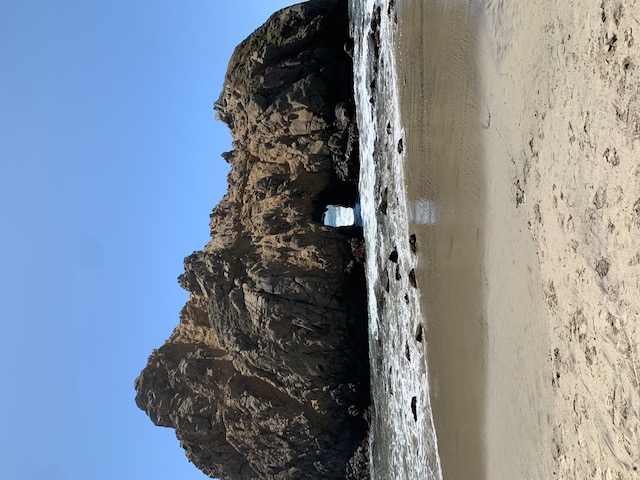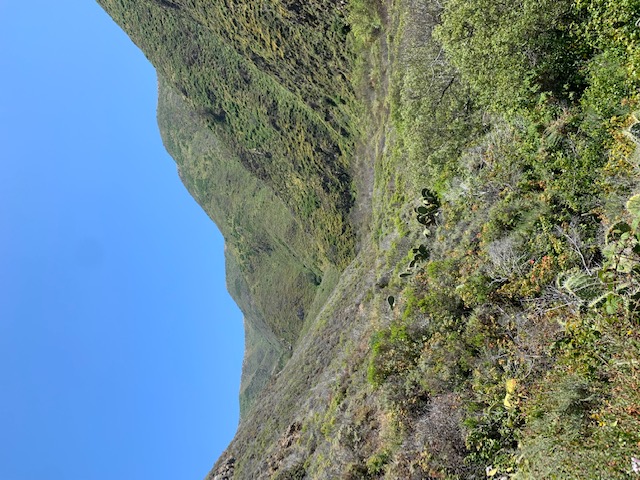Adventures in Travel Writing

Kate Stephenson is an Assistant Professor, General Faculty in the Writing and Rhetoric Program in UVA's Department of English in the College and Graduate School of Arts & Sciences. She is also a Faculty Fellow at the Center for Teaching Excellence. She teaches an advanced writing seminar in Travel Writing and takes us along with her as she describes the adventures that she and her students share.
Why is everyone suddenly going to Iceland? What is the difference between a traveler and a tourist? Can travel writing evoke political and social change? These are just some of the questions I ask third- and fourth-year students in my Travel Writing class as we interrogate what it means to travel, why so many of us seem to have that Steinbeckian incurable itch “to be someplace else” described in Travels with Charley (3), and how our assumptions about travel depend on where we come from and who we are. Most students enter my seminar expecting to pen light-hearted narratives about family vacations or road trips with their friends. And we do share some of those funny moments, particularly when we read Bill Bryson’s Notes From a Small Island. But we also discover the ways in which travel writing helps us explore expectations about literary genres, systems of power and privilege, the impact of stories, and the concept of subjectivity.
And that’s the thing about travel writing—it’s never just about one perspective. There’s always a sort of double consciousness that arises from the space between the lived experience and the writing of that experience. Travel writing asks us to consider what it means to tell the “truth.” We expect, of course, that travel writers have actually been to the place and experienced the things they write about, but the words are always constructed, the narrative always subjective, filtered through not just the eyes of one traveler but through the lens of time as well. How does the story change with the passage of time, the filter of memory?
 Travel writing proves inherently difficult to define. Its characteristics draw from a wide array of other genres including fiction, memoir, stand-up comedy, journalism, diary, and epistolary, just to name a few. The hybridity of the genre, to borrow a term from Tim Youngs (3), injects it with an energy and creativity that leaves open myriad possibilities for experimentation in form, voice, and purpose. Is travel writing a guidebook that offers hotel suggestions and daily itineraries? Is it a diary entry written by an explorer or an ethnographic piece recorded by a sociologist? Is it a humorous narrative about a specific place or simply a book about a journey? Of course, travel writing can be all these things, and as we grapple with defining the genre, we soon realize that our concept of “truth” comes into question. Ultimately, this worry over truth helps us distinguish travel writing from other types of literature. Almost every novel, as well as much poetry and drama, involves movement and travel, but those journeys are imagined and undertaken by characters. In travel writing, the authors announce that they have been to the places they write about and are offering up their own observations in first-person accounts. While there is imagination and craft in travel writing, the experiences themselves are not imagined; they are “true.” And it is this distinction that defines the genre.
Travel writing proves inherently difficult to define. Its characteristics draw from a wide array of other genres including fiction, memoir, stand-up comedy, journalism, diary, and epistolary, just to name a few. The hybridity of the genre, to borrow a term from Tim Youngs (3), injects it with an energy and creativity that leaves open myriad possibilities for experimentation in form, voice, and purpose. Is travel writing a guidebook that offers hotel suggestions and daily itineraries? Is it a diary entry written by an explorer or an ethnographic piece recorded by a sociologist? Is it a humorous narrative about a specific place or simply a book about a journey? Of course, travel writing can be all these things, and as we grapple with defining the genre, we soon realize that our concept of “truth” comes into question. Ultimately, this worry over truth helps us distinguish travel writing from other types of literature. Almost every novel, as well as much poetry and drama, involves movement and travel, but those journeys are imagined and undertaken by characters. In travel writing, the authors announce that they have been to the places they write about and are offering up their own observations in first-person accounts. While there is imagination and craft in travel writing, the experiences themselves are not imagined; they are “true.” And it is this distinction that defines the genre.
Such inquiry into the nature of “truth” leads us to ponder the purpose of travel writing, which poses important questions about perception, memory, and power. While some travel writing merely offers advice or entertainment, the genre has the potential for lasting impact. Indeed, Youngs begins his book with the sentence: “Travel writing, one may argue, is the most socially important of all literary genres” (1). If we consider the sweeping history of the genre, which stretches back thousands of years, we soon recognize the power travelers possessed as they returned home with their tales of distant places and people; tales that would then define the perceptions of those faraway places. In times when few people traveled, those stories shaped the narratives of entire peoples and places. We see clearly the power of these narratives to perpetuate systems of colonialism and inequity in 18th and 19th-century literature penned by explorers and travelers whose observations were filtered through a particular subjectivity, usually one that privileged European, white values. To interrogate these ideas, we turn to Postcolonial theory and travel texts like Jamaica Kincaid’s A Small Place and Bhajju Shyam’s A London Jungle Book to reimagine and reclaim these histories and places. And we consider the ways in which so many people across the globe experience travel as trauma in texts like Clemantine Wamariya’s The Girl Who Smiled Beads and Stephen Benz’s essay, “The Land of the Lost,” which proved particularly timely as it focuses on Moldova. For the first time this semester, no one needed a map to locate Moldova, and we understood unexpectedly (this essay has been on the syllabus for several semesters) how travel writing intersects with current events.
We end the semester by studying the Out of Eden Project, which follows Pulitzer Prize-winning journalist, Paul Salopek, as he walks the path of human migration from Africa to the tip of South America. Supported by National Geographic, he has been walking since 2013, gathering stories and writing his own at the pace of 3 miles per hour. Students read his beautiful prose and follow his journey online; each semester, we note his progress and ask him questions via a Discussion Forum. Often, he answers.
In contrast to Salopek’s sweeping travels, students finish the semester with an essay on local travel as they choose a place in Charlottesville to visit and write about. We begin this unit with an African American history tour of Grounds and a visit to the University Cemetery. We discuss the ways in which travel does not have to happen far away; indeed, traveling locally can offer powerful insights into history, positionality, and the present moment. After writing and thinking all semester about places far away, we return to the places closest to us and see them, I hope, with fresh eyes. Through the process of writing, we discover new things not only about those familiar places but about ourselves. And that, ultimately, is the wonder of travel writing.
Works Cited:
Steinbeck, John. Travels with Charley: In Search of America. Penguin Books, 1961.
Youngs, Tim. The Cambridge Introduction to Travel Writing. Cambridge University Press, 2013.
Alumni & Parent Travels in UVA's Office of Engagement offers opportunities for travel with UVA faculty, alumni, friends, and families!